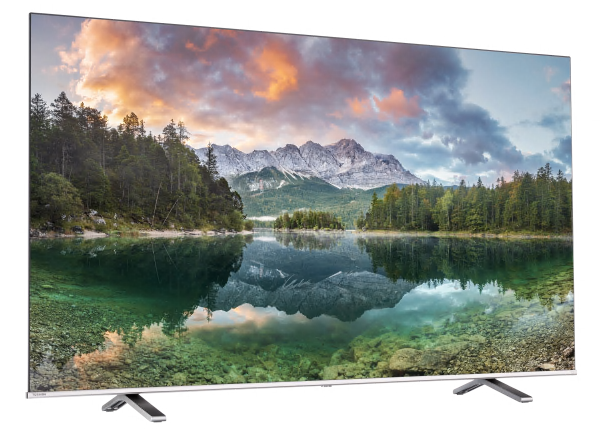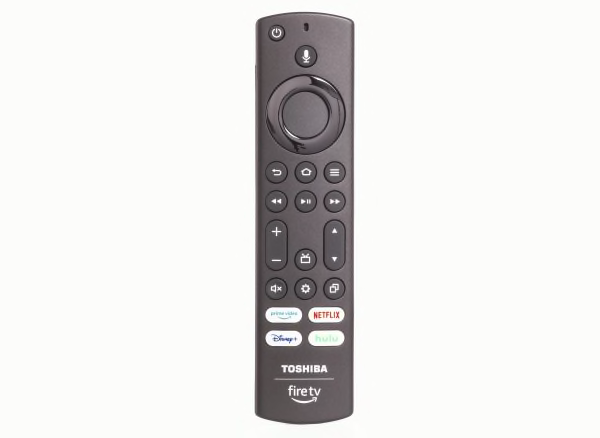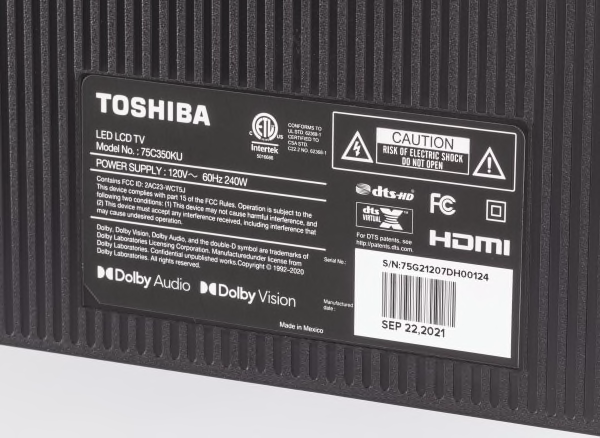HD PICTURE QUALITY HD picture quality fell short, overall. Reproduction of fine HD image detail was Excellent, but image detail was very exaggerated and made images appear less natural, despite our attempts to minimize this with the sharpness control. Color accuracy was Very Good, with flesh tones in particular, looking natural. Contrast—the difference between the darkest blacks and brightest whites—was Good, so images had some depth, but it was not the best. Black levels were overly bright, unfortunately, worse than many TVs. Image brightness was Very Good (with the backlight control turned up), so the picture was well suited for a brighter room—a lower setting is recommended for a dimmer viewing environment. There was slight display non-uniformity in our test sample—it appeared as brighter cloudy areas which were most noticeable on very dark scenes (or in the black bars of a letterboxed movie)—the severity can vary from model to model. Its reproduction of smooth edges on image content for "up-converted" HD-to-UHD images was Very Good with minimal "jaggies" (jagged edges). Film mode detection from 1080i content was Excellent. However, deinterlacing of 1080i video fell short with some visible "jaggies."
4K UHD PICTURE QUALITY Overall 4K UHD picture quality was decent, overall. In our UHD testing, we played native-4K movies and test videos (non HDR) thru the TV's HDMI input, and found their image detail was all there. For color, contrast and black level, the TV performed similarly to its HD picture quality.
HIGH DYNAMIC RANGE (HDR) PERFORMANCE HDR performance had very limited effectiveness. In our tests, the display's lack of high peak brightness capability (by HDR standards) limited its ability to show the benefits of our HDR 4K content. It could not reveal much contrast between the moderately bright and very bright highlights, while the brightness levels in the mid-to-lower tones, like those in an indoor scene, were preserved. In HDR mode this TV only allowed us to optimize the A picture settings. All other settings were as they were for the standard-dynamic range (SDR) HD picture. It did a good job reproducing a greater range of nuanced shadow detail, from black to white, with no obvious banding within the gradually shaded areas, but we noted some loss of detail within the highlights of the brightest areas. Brightly colored objects remained nicely saturated.
VIEWING ANGLE This Toshiba model has a wide viewing angle overall, better than that of most TVs. It will provide fairly consistent picture quality, with fewer problems than most TVs, for typical viewing conditions—say, if your family is seated across a long sectional or in chairs off to the sides. Our examination at various viewing angles indicated reasonably good consistency. In our tests, the picture did show moderate dimming from the sides. With dark scenes this model doesn't fare quite as well. When viewed from the sides, the depth of black levels varied depending on our vertical position. As we moved closer to the screen this limitation became even more apparent, especially if seated on the floor looking upward where black levels brightened significantly. When we viewed the TV from the sides the image had some loss of quality. We viewed the image from above and below center screen, and saw Excellent vertical viewing angle performance, with no significant changes in color, contrast, and black level.























